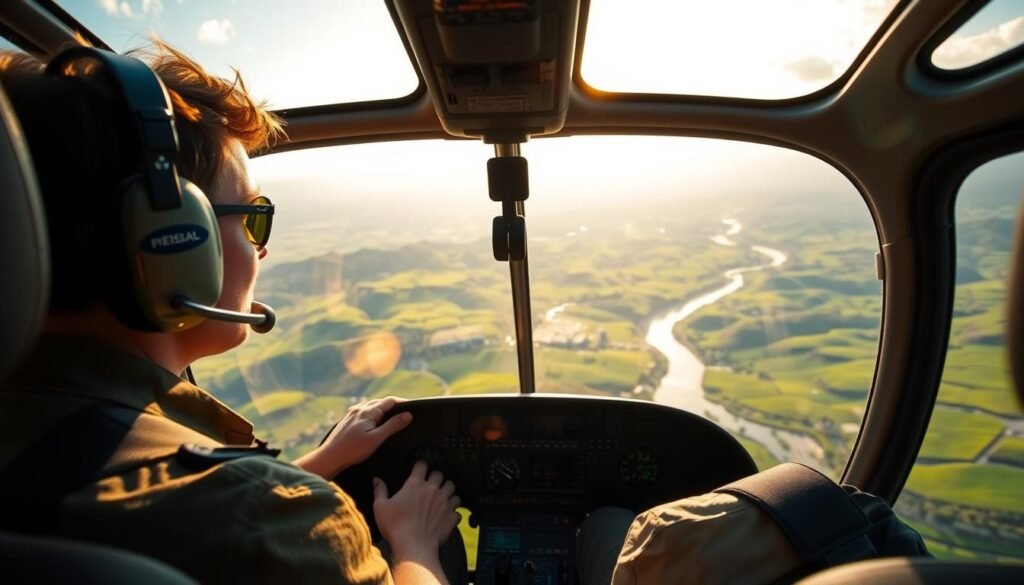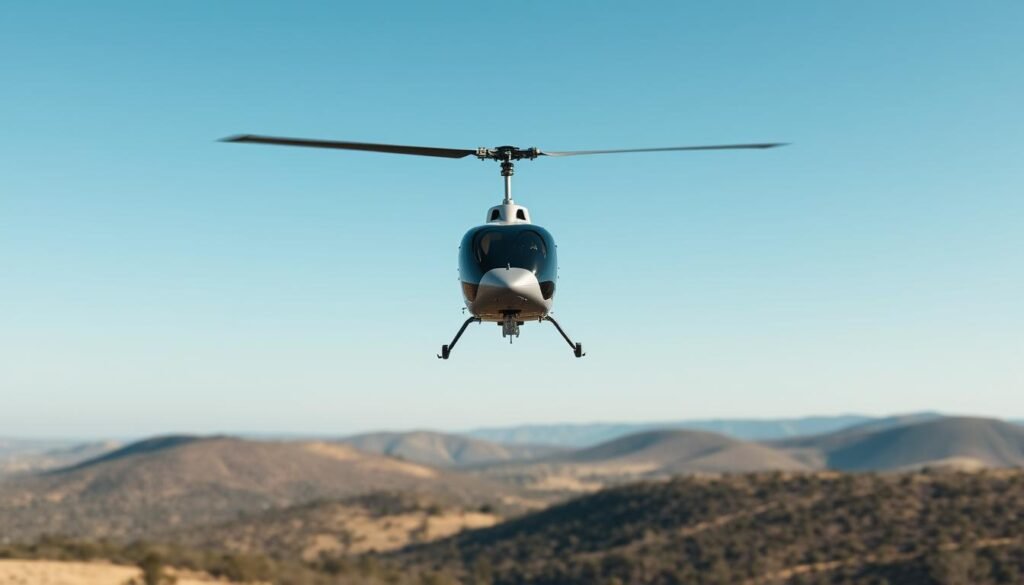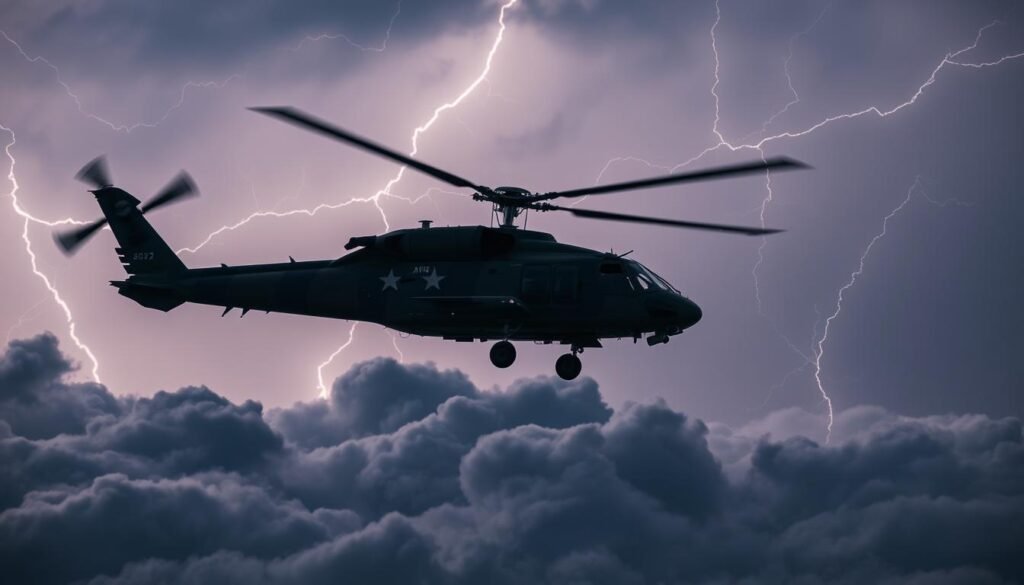Helicopters are known for their versatility, able to take off and land vertically, hover in place, and navigate through tight spaces. While their ability to fly in challenging environments is well-documented, there are many misconceptions about how high helicopters can actually fly. In this article, we’ll explore the maximum altitude helicopters can reach, debunk common myths, and explain the factors that limit a helicopter’s altitude.
1. Myth: Helicopters Can’t Fly as High as Airplanes
One of the most common misconceptions is that helicopters are restricted to flying at low altitudes, while airplanes can soar to much higher levels. While it’s true that helicopters don’t fly as high as commercial jets, which can cruise at altitudes of up to 40,000 feet, helicopters are still capable of reaching impressive heights.
Reality:
Many helicopters can fly at altitudes of up to 10,000 to 12,000 feet, with some high-performance models capable of reaching even higher. The current world record for helicopter altitude was set in 1972 when a SA 315 Lama helicopter reached 40,820 feet (12,442 meters) on the slopes of Mount Everest. This demonstrates that helicopters can fly at extreme altitudes, though this is typically not necessary for most operations.
2. Factors That Limit Helicopter Altitude
While helicopters can reach significant heights, several factors limit how high they can fly safely. The two primary factors are air density and engine performance.
Air Density:
At higher altitudes, the air becomes thinner, meaning there is less oxygen for both the helicopter’s engine and the rotor blades to generate lift. Helicopters rely on the surrounding air to create lift, and as the air becomes less dense, the rotors have to work harder to keep the aircraft in the air.
Engine Performance:
Helicopter engines require oxygen to generate power. At higher altitudes, where oxygen levels are lower, the engine’s performance decreases. This is why many helicopters have an operational ceiling, which is the maximum altitude they can fly at while still maintaining safe engine performance.
3. High-Altitude Helicopters
Certain helicopters are specifically designed for high-altitude operations. These helicopters are equipped with powerful engines and lightweight designs that allow them to perform well in environments where air is thinner. For example, search and rescue helicopters used in mountain operations are often designed to fly at altitudes above 15,000 feet.
Examples of High-Altitude Helicopters:
- Eurocopter AS350 Écureuil: This helicopter is commonly used for high-altitude rescues and holds several records for flights at extreme altitudes. It’s capable of operating at altitudes of up to 23,000 feet.
- Mil Mi-17: This Russian helicopter is used in a variety of operations, including high-altitude rescues in the Himalayas. It can fly up to 20,000 feet.
4. Myth: Helicopters Can’t Operate in High Mountain Ranges
Another myth is that helicopters cannot operate in high-altitude mountain ranges, such as the Himalayas or Andes. However, helicopters have been used in these regions for decades, primarily for rescue operations and scientific expeditions.
Reality:
Helicopters are used regularly in high mountain ranges, though the operational challenges increase at higher altitudes. In these environments, pilots must be skilled in managing fuel, weight, and engine performance. Mountain rescue missions are among the most demanding helicopter operations, requiring specialized helicopters and highly trained crews.
For instance, helicopters have successfully rescued climbers at altitudes above 29,000 feet on Mount Everest, the highest point on Earth.
5. Helicopter Operations at Different Altitudes
While helicopters are capable of flying at high altitudes, their typical operational range is much lower. The majority of helicopter missions take place between 500 and 10,000 feet, depending on the type of operation.
Low Altitude Operations (Below 5,000 feet):
- Urban environments: Helicopters are often used for medical transport, news reporting, and law enforcement in cities, where flights are conducted at relatively low altitudes.
- Agricultural operations: Helicopters are also used at low altitudes for spraying crops or inspecting fields.
Mid-Altitude Operations (5,000 to 10,000 feet):
- Rescue and medical missions: Helicopters perform rescue operations and medical evacuations at altitudes up to 10,000 feet, particularly in hilly or mountainous regions.
- Military missions: Helicopters are used by the military for reconnaissance, transport, and combat operations at these altitudes.
High Altitude Operations (Above 10,000 feet):
- Mountain rescues: Helicopters are deployed for high-altitude rescues in mountain ranges like the Rockies, Alps, or Himalayas.
- Scientific missions: Helicopters are sometimes used for scientific research or geological surveys at higher altitudes.
6. Safety Considerations at High Altitudes
Flying at higher altitudes presents unique safety challenges, both for the helicopter and the crew. Pilots must carefully monitor the helicopter’s performance, paying attention to engine power, rotor speed, and fuel consumption.
Key Safety Concerns:
- Power Loss: The reduced oxygen levels at high altitudes can cause engine power to decrease, which can affect the helicopter’s ability to hover or climb further.
- Weather Conditions: High-altitude environments are often subject to rapidly changing weather, including strong winds, storms, and low visibility. Helicopters are particularly vulnerable to turbulence and downdrafts at these altitudes.
- Pilot Fatigue: Flying at high altitudes for extended periods can lead to fatigue, particularly due to reduced oxygen levels. Pilots must be trained to manage these conditions and take precautions to avoid overexertion.
Conclusion
While helicopters typically operate at lower altitudes than airplanes, they are capable of reaching significant heights, with some models capable of flying above 20,000 feet. High-altitude operations require specialized equipment and highly skilled pilots, but helicopters have proven their ability to perform in extreme environments, from mountain rescues to scientific research missions. By understanding the limitations and capabilities of helicopters at different altitudes, we can debunk the myth that helicopters are restricted to low-level flight and appreciate the full range of their capabilities.
Related Articles
- Can Anyone Learn to Fly a Helicopter? Understanding Training and Skills Required
- Why Do Helicopters Make That Distinctive Sound? Helicopter Noise Explained
- Do Helicopters Require More Maintenance Than Airplanes? Separating Fact from Fiction
- How Far Can Helicopters Travel? Dispelling Range Myths
- What Happens if a Helicopter Engine Fails? Debunking Catastrophe Myths
More from This Category
- Are Helicopters More Dangerous Than Planes? A Safety Comparison
- Do Helicopters Have Parachutes? Exploring Emergency Systems
- Can Helicopters Fly Upside Down? The Truth Behind Aerobatic Stunts
- Do Helicopters Need a Runway? Myth vs. Reality
- How Much Does It Really Cost to Fly a Helicopter? Busting the Myths
- How High Can Helicopters Fly? Debunking Altitude Myths
- Can Helicopters Fly in Bad Weather? Understanding Helicopter Capabilities
- Do Helicopters Really Hover Forever? Separating Fact from Fiction
- How Safe Are Helicopters? Debunking Common Misconceptions
- Top 10 Myths About Helicopter Safety: What You Need to Know



